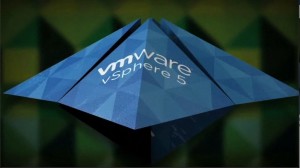Terminology used for various vSphere 5 features
vSphere 5 is the latest offering from VMWare in its datacenter virtualization line of products. There have been few major changes, such as there is no longer an ESX server. ESXi is the new baremetal hypervisor used in the vSphere suite. What used to be called ESXi free server is now called vSphere free Hypervisor. ESXi is essentially the new ESX server but a thinner version of ESX with much smaller footprint, operating system and much better capabilities. All this can be really confusing and on top of that all the jargon words they use to explain the features. In this article we will briefly explain the terminology associated with VMWare vSphere 5 suite with brief description of each.
Here is the list of terminology and features of VMWare vSphere 5 suite:
ESXi: This is the new baremetal Hypervisor and it replaces what use to be VMWare ESX server, as mentioned earlier, its a much thinner and better Hpervisor with a much smaller foot print
vCenter: Windows based application used to manage your VMWare virtual infrastructure, new with vSphere 5, you can also run vCenter as a Linux virtual appliance, saving you a Windows Server license
vSphere Client: Client used to manage ESXi and vSphere suite with inventories of folders, datacenters and virtual machines, basically configuration of most of your virtual infrastructure, access virtual machine consoles etc. There is also a web based version (which is limited in features) of vSphere Client.
vMotion: vMotion technology enables a virtual machine running to be transferred from one server to another, without having any downtime or service unavailabilty
svMotion: Also called Storage vMotion, which is the same concept as vMotion but its particularly for storage only.
DRS: Also called Distributed Resource Scheduler
Storage DRS: Storage Distributed Resource Scheduler
DPM: Distributed Power Management
VMHA: VMWare High Availabilty
FT: Fault Tolerance
vShield Zones: A security feature available with VMWare vSPhere 5.0
Data Recovery: An added application for backing up and restoring vSphere Suite
Hot Add: Hot Add RAM and Hot Plug CPU to running Virtual Machines
Distributed Switch: Also called vDS. It is an aggregation of many vSwitches. The biggest advantage is that you no longer have to configure your individual ESX / ESXi hosts for networking. See a brief video about towards the end of this article.
VMFS: VMWare File System, the underlying file system to the VMWare OS also called Virtual Machine File System. The latest version of VMFS is 5.x
Thin Provisioning: This feature lets you allocated disk space to Virtual Machines upfront. It lets VMWare administrators allocate more disk capacity to the VMs then they have available.
Update Manger: This feature lets you deploy patches and updates centrally and automatically to VMWare vSphere hosts
SIOC: Also called Storage I/O Control, lets you define priority access to Storage Resources
NIOC: Network I/O Control, same as SIOC except it lets you define priority access to Network resources
Host Profiles: Enables you to establish standard configuration for VMWare hosts
These were all the features, terminology and jargon associated with the new VMWare vSphere 5 Suite. Let us know if we have missed anything and we will gladly add that in.
Information Video about VMWare Distributed Switch:
















[…] Terminology used for various vSphere 5 features […]
[…] Terminology used for various vSphere 5 features […]